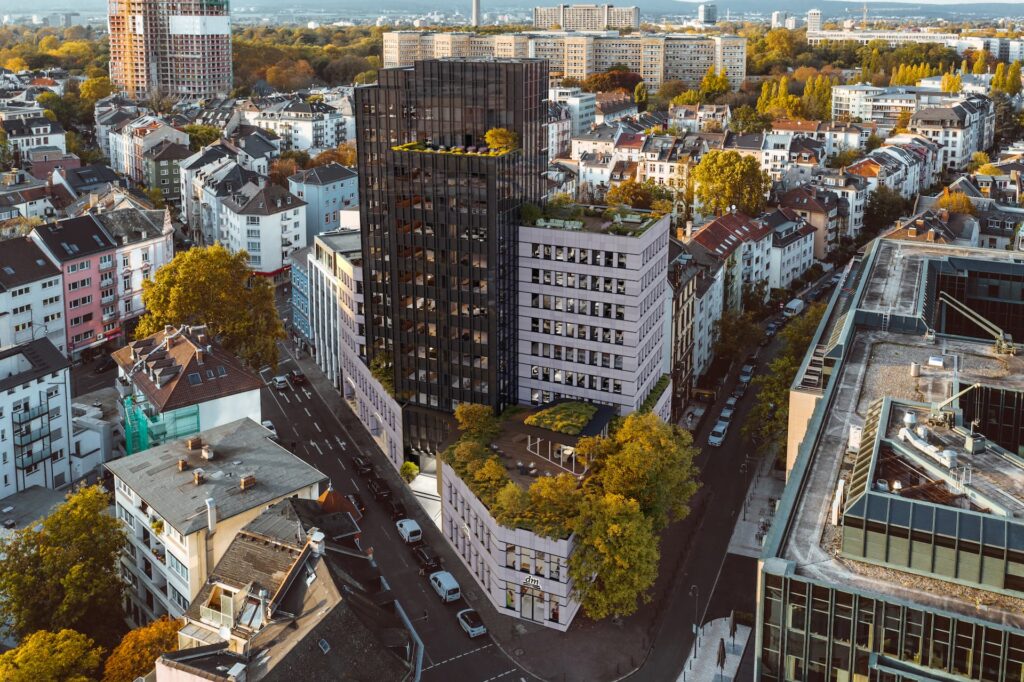How to determine rendering pricing has legit become a jigsaw puzzle of the rendering world. No matter what role you play in the rendering industry, you will find your head stuck on how much to charge your clients.
That is why there is a dire need for somebody to break down the factors that influence 3D rendering pricing. This article will let you in on the ways one can decide on 3D rendering prices. Furthermore, we will explore the market prices of different types of 3D renderings. Let’s dive into it.
Significance of 3D rendering
Before we get an immersive knowledge about the factors that can affect the prices of 3D rendering, let us understand the importance of 3D renderings for architects. In the architectural industry, 3D renderings are the real dealmakers that keep an architectural firm on the roll.
In the current times, the most appealing and effective marketing technique is 3D renderings, where architectural firms seal deals based on virtual designs. 3D renderings curate an image of the prospective design that can be edited, modified, and altered depending on the preferences of the clients.
When a client gets an immersive experience of the prospective project, they are able to put their faith in the architectural firm and hence lock the deal right away, in most cases. Thus, it won’t be wrong to say that the business deals at architectural firms really depend on 3D rendering.
All around, 3D renderings play a pivotal role in making a deal. It tells what will be delivered and helps ensure that everything aligns with the client’s expectations.
Imagine you plan to build a home that’s heaven for your family and get a pre-built peek into your own house, much like watching your fetus on an ultrasound screen! It excites everyone, and when dopamine hits, the answer is always positive; we know that!
It may build a trusting relationship between the architectural firms and their clients. Who knows, they may keep coming back and bringing the company more and more projects.
Now, we know how significant a 3D rendering is for an architectural firm. It’s time for us to move on to the factors that can influence the price rates.
Factors Affecting 3D Rendering Pricing
The pricing of 3D rendering, much like other services, depends on many factors ranging from the complexity of the project to the size of the project to the timeline of the project. There is no way one can survive in an industry without knowing the price criteria. Therefore, if you are about to step into the 3D rendering industry, do not move and keep on reading the article.
Here we break down the strategical factors to consider while letting in your clients on the rates of the project:
1. Number of Images
As an ordinary mind would think, with an increase in the number of images, the prices may also rise, but to your surprise, that is not the case. With the increase in the number of images, the rates per image go down.
Usually, a 3D designer uses a single model to curate multiple images out of it. Following the thumb rule of business, the lesser the effort, the lesser the price, and the 3D rendering project becomes cheaper with an increase in image numbers.
For instance, if you are told to provide three angles of a room, you will have to work on only the dimensions of the prototype. There you go! You have three different images of a room seen from three different angles.
In this case, you will invest little of your creative and manual energies. Also, you can trim your production steps and skip the “extensive brainstorming” step. You will also not have to give technical thought to the second and third picture, as the first picture serves as the prototype, which has already been screened for technical errors.
2. Size and Complexity of the Project
Needless to say, the size and complexity of the project are directly proportional to the price rates. The more blood, sweat, and tears you put into a project, the higher you can charge for it. Not only do the larger projects demand more of your creative and muscular energies, but they also typically involve complex tools and software.
You may sometimes have to lease an online tool for a month or a certain duration to provide what has been asked. Complex and sophisticated projects may require skills like precision, attention to detail, and intricate creativity.
For projects like these, you will need tools that offer a spectrum of features and are specially designed for particular kinds of architectural projects. Furthermore, you may require a special skillset to complete a project.
In a nutshell, you will charge more for a complex and bigger project. On the other side, if the project is as simple as a cake or is smaller in size, you are bound to charge less. Thus, the pricing aligns with the project’s complexity chart.
3. Timeline
When you are selling your work, you are actually selling your skills, knowledge, experience, creativity, and time to your client. Hence, to determine the rate of a 3D rendering, time plays a pivotal role as well.
Have you ever overpaid a service provider for delivering the service within a limited time? For instance, getting a customised cake delivered before the time the provider claims to deliver will always cost you more than the designated price.
The same goes with 3D renderings; if your client wants a 5-day’s work done in 3 days, you will be right to charge them extra money. Getting a project delivered in an emergency or within a tight deadline requires a continuous and exhausting number of working hours each day.
Besides that, the 3D rendering studios may need more hands to complete the project within the expected time limit. The more the labour force, the more you can charge the client. After all, the studio has hired more professionals to get the project done on time.
On that account, we say the prices of 3D rendering go up when the timeline is shorter. Similarly, if you get a loose deadline or a professionally apt timeline for the project, you should stick to the typical price rate.
4. Number of Revisions
The number of revisions has a direct influence on the pricing of the 3D rendering. When you are expected to redo a project for multiple rounds, you are investing more and more energy in the project.
Your sweat and tears should not go in vain, and hence, you should charge for each revision you are asked to do. Usually, the firms expect 1-3 revisions per article, which should all be paid. However, you can avoid revisions by sticking to instructions and getting feedback at each and every step of your 3D rendering creation.
5. Additional Requirements
The clients may want you to add furniture and other objects if it is the interior of a building you are designing. This is an additional service that you are providing to your client. Hence, it is justified that you charge them for these services.
However, the 3D rendering studios usually have object libraries that provide the clients with a spectrum of options. If the client is happy to choose the object from the library, it is a win-win for both the client and the studio.
There can be times when the client is exact and possessive about the design and hence wants a new design for the furniture. In that case, the studios will not only be adding more effort but will also be investing in liabilities like electricity for the additional hours of work.
Generally, the 3D rendering studios charge anything between $25 to $75 for each object. However, one must keep in mind that the charges per object can fluctuate with the complexity of the object design and the technical precision required for the design.
6. Quality of Image
In this “Instagram” era, everybody knows what quality of image refers to. That being said, we won’t be defining the quality of the image; instead, we will jump on analysing the impact of image quality on the prices of 3D rendering.
Yes! You are guessing it right! The image quality will lead to more expensive 3D renderings. If the client wants good-quality images that are photorealistic and immersive, you will be right in charging them good money.
The reason is that good-quality images require qualified artists and expert directors to get the desired results. When a process requires more skilled labour, the charges, by default, go up. In addition to this, some studios also invest money to train their staff to generate high-quality images.
On the other hand, if the client is willing to compromise on the quality, they can communicate that to the studio. Once it is communicated, the studio will be obliged to charge the client accordingly.
How much do 3D Renderings Cost?
Again, the 3D rendering pricing varies depending on the different types of services needed to complete a project. Further, it also depends on the expertise or the portfolio, the complexity of the project, and the amount of labour involved in the project.
Here is a glimpse into the exact 3D rendering pricing that is prevalent in the architectural circuit:
Interior Rendering Costs
You know now that the prices of 3D renderings, whether interior or exterior, depend on the size, complexity, and timeline of the project and the skillset of the studio. To be precise, the prices of 3D interior renderings can vary from $400 to more than $2500.
There are good chances you may find studios that charge between $600 and $1500 for different interior rendering designs. This price range can vary depending on the above-mentioned factors.
Exterior 3D Visualization Costs
The exterior 3D visualization designs can cost between $600 to $4000, varying with the factors that have already been mentioned in the article. However, with that price range, you will also find studios that charge between only $800 to $2500.
The exterior 3D renderings are usually cheaper than the interior renderings. This is because interior 3D renderings require more extensive modeling than exterior 3D renderings. Likewise, aerial shots of a rendering cost more than eye-level shots because aerial shots require more detail than later ones.
3D Animations Costs
Usually, the studios charge their client for the 3D animation per second. However, this does not fade away the significance of the project’s complexity. For instance, if the client wants a slow fly-through animated video of the virtual architectural design, it will cost less than the movie-style animations.
The commercial-type 3D animations involve merging quite a few clips together in a creative way. Furthermore, the 3D animation costs can go high if a foreign artist is hired to meet the tight deadline.
Keeping in mind the expertise, portfolio, and skills of a studio, the pricing of 3D animations can vary between $100-$250 for each second. However, that is not the only price range that exists in the market for 3D animations. You may also get your work done between $140 to $220 per second.
3D Floor Plan Rendering Costs
The prices of 3D floor plan renderings can vary depending on the complexity and size of the project. The costs can jiggle between the price range starting from $500 to $2000. However, if this price range is not in your budget, you can choose to go with 2D floor plan renderings.
The 2D-floor plan renderings are cheaper than the 3D ones; compromising on the quality comes with lower prices. Furthermore, you can get a discount on prices when you get a 3D rendering and 3D animation designed by a single 3D rendering studio.
Different Ways of Charging a Client
There are multiple ways an employee gets paid in the corporate sector. There are firms that reimburse their employees based on the number of hours they have worked. There are other firms that pay their staff for the number of projects one gets done in the required time.
Similarly, there are different ways the service providers in the 3D rendering circuit are paid. Here is a list of the different ways a 3D rendering firm pays its clients:
Per Image
It becomes easier for a 3D rendering studio to charge their clients per image. That way, the effort that they put in each image becomes fruitful, and they set themselves free of any confusion. The smaller projects, in particular, can be paid an amount that corresponds to the number of images provided by the 3D rendering studio.
It also facilitates the client if they are on a budget. They can get an image deducted, deleted, or disposed of if the prices surpass their budget limit. Thus, charging your clients per image can sometimes be a lazy yet wise decision to go with.
Hourly Rate
Who is not familiar with the hourly rate method of reimbursing staff? You can opt for the hourly rate for a project that is even slightly unpredictable or if the plan is unclear in the initial stages. Thus, when you work with an hourly rate method of salary, you are paid for each and every effort you put in.
Suppose you are not satisfied with the design or the client rejects the project for a petty reason. Won’t it hurt you if you were not paid for your first attempt that went straight into the trash can of your 3D rendering gadget?
Per Package
Like a food deal, the 3D rendering studios also offer interesting deals to their customers. For instance, they may offer a package where you get everything done and designed by skilled architects and designers.
This deal may include different types of 3D rendering skills and may prove to be a single-stop solution for the diverse and unique demands of the clients. For instance, you can get your exterior and interior design at the same time, and both services are provided to you with a discount.
Conclusion
To wrap it up, there are multiple factors that can essentially influence the 3D rendering pricing. For instance, these factors include the size of the project, the number of images, image quality, the complexity of the project, and so on.
Furthermore, the types of 3D renderings may include interior and exterior renderings, floor plan renderings, and 3D animations. All these types have different workload demands and creative requirements; hence, each of the types is rated differently.
FAQs
Q. Why is Rendering so Expensive?
The costs of 3D renderings go high and low depending on the project complexity, size, timeline, required skillset, tools involved, and much more. If you are looking for good quality 3D renderings, they will cost you a handful of money.
Q. How much does 3D Rendering Cost in Australia?
A 3D rendering may cost you anything between $500 to $5000 per image. This price range goes up and down based on the complexity, size, and quality of the project.
Q. What is the Industry Standard for 3D Rendering?
The most commonly used tool in the 3D rendering industry is the AutoDesk 3Ds Max. This tool provides an array of editing options and enables the curation of legitimate photorealistic images and high-quality images.







